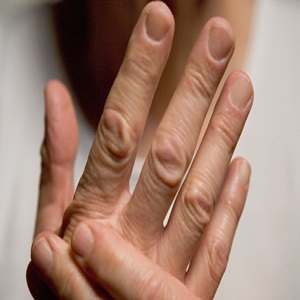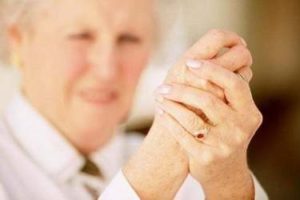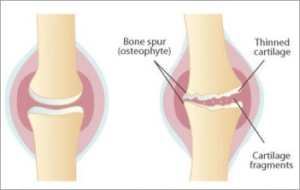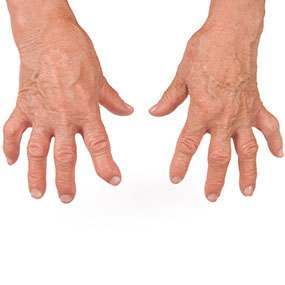Common Treatments for Joint Inflammation
There are many reasons why a joint can be inflamed. Symptoms appear as a result of many physical problems including physical trauma, damage, infection, nutrient deficiency, or unnecessary chemical deposits.
 It is very important to properly diagnose the main reason for joint inflammation in order to prevent further damage that can extend to the muscles or tissues surrounding the joint area. Accurate diagnosis is critical in finding the right treatment that minimizes the uncomfortable symptoms or effects of the joint condition.
It is very important to properly diagnose the main reason for joint inflammation in order to prevent further damage that can extend to the muscles or tissues surrounding the joint area. Accurate diagnosis is critical in finding the right treatment that minimizes the uncomfortable symptoms or effects of the joint condition.
Basic Treatment for Joint Pain
The most basic treatment usually given for joint pain is hot or cold compresses, anti-inflammatory solutions or medications, and topical creams. The hot compress helps improve blood circulation to the joint and the surrounding area, which makes the inflammation subside. The cold compress, on rare occasions, is given to patients as an external pain reliever when the redness or heat increases in the joint area, which caused the pain.
Topical creams and anti-inflammatory solutions are administered to reduce inflammation, both externally and internally. Though these immediate treatments are available, it is still important to consult a doctor because joint pain can also be symptomatic of other problems.
On the other hand, joint degeneration or auto-immune conditions affecting joints are the most common reason for joint pain.
 Degeneration gradually damages the cartilage and causes connecting bones to rub together. This produces unbearable pain to the patient and serious inflammation to the joints’ surrounding areas. The condition can even lead to complications such as infection if left untreated.
Degeneration gradually damages the cartilage and causes connecting bones to rub together. This produces unbearable pain to the patient and serious inflammation to the joints’ surrounding areas. The condition can even lead to complications such as infection if left untreated.
The auto-immune condition affecting joints is even more serious because it can totally immobilize the patient or make simple movements impossible. It is a condition where the immune system attacks the healthy and well functioning cells in the joint area and muscle groups in the surrounding area. The pain it can give to the patient is unbearable and in worst cases it can even be fatal.
Preventing the Development of Gout
Another type of joint condition causing inflammation to the joint is gout. Joint pain and inflammation are just two of the symptoms of gout, caused by high levels of uric acid deposits in the joint and surrounding area. Symptoms usually start in the big toe, but they also can appear in other lower body parts and can last for days or even weeks.
 The best way to prevent gout is by avoiding foods high in uric acid as well frequent exercise. Anti-inflammatory drugs are usually given to lessen symptoms if the condition is already present. If symptoms do not subside after a series of medication and treatment, consult with a specialist to determine other treatments. Also consider further diagnostic procedures to determine if there is an underlying condition triggering symptoms.
The best way to prevent gout is by avoiding foods high in uric acid as well frequent exercise. Anti-inflammatory drugs are usually given to lessen symptoms if the condition is already present. If symptoms do not subside after a series of medication and treatment, consult with a specialist to determine other treatments. Also consider further diagnostic procedures to determine if there is an underlying condition triggering symptoms.
Inflammation of the joint, as mentioned above, can be caused by other illnesses as well, so always seek medical attention immediately to get the right diagnosis and applicable treatments. When treating joint conditions, medicine follows a progression of treatments, beginning with lifestyle modification, medication, and surgical procedures for extreme or worse cases. Yet most of the time, medication and changes in lifestyle are enough to minimize the effects of joint conditions and delay their progression.

 Subscribe Now
Subscribe Now

 As noted, generally the symptoms of both types develop undetected, causing medical technologists and medical practitioners to overlook the symptoms and misdiagnose the patient. As a result, these conditions are often diagnosed in later stages where prevention and management of the symptoms becomes difficult. Patients’ quality of life often suffers as a consequence, and they experience severe pain, immobility, and, for some, psychological degradation.
As noted, generally the symptoms of both types develop undetected, causing medical technologists and medical practitioners to overlook the symptoms and misdiagnose the patient. As a result, these conditions are often diagnosed in later stages where prevention and management of the symptoms becomes difficult. Patients’ quality of life often suffers as a consequence, and they experience severe pain, immobility, and, for some, psychological degradation.

 Medicine has identified at least a hundred types of variants of joint conditions; some may still be unidentified at this time. Even for the most common types there is currently no cure, and science has not clearly defined the core reason why they can develop or what definitively causes them to develop.
Medicine has identified at least a hundred types of variants of joint conditions; some may still be unidentified at this time. Even for the most common types there is currently no cure, and science has not clearly defined the core reason why they can develop or what definitively causes them to develop. Infection including bacterial, viral or even an STD, can also cause the development of joint damage. The body’s own defense against attack — the immune system — can cause the development of a joint condition. The autoimmune condition damages the joints by destroying the healthy joint cells until every part of it breaks down beyond repair.
Infection including bacterial, viral or even an STD, can also cause the development of joint damage. The body’s own defense against attack — the immune system — can cause the development of a joint condition. The autoimmune condition damages the joints by destroying the healthy joint cells until every part of it breaks down beyond repair. Keep in mind that these are just few of the reasons for a person to experience joint problems that causes the painful and uncomfortable symptoms that may cause changes to the patient’s way of living. Joint problems can definitely make daily tasks like moving around hard or even impossible to do because of the joint pain, hardening, and stiffening. While it is true that there is no cure for the more severe joint conditions, the good news is that the chances of contracting them can be avoided by keeping a
Keep in mind that these are just few of the reasons for a person to experience joint problems that causes the painful and uncomfortable symptoms that may cause changes to the patient’s way of living. Joint problems can definitely make daily tasks like moving around hard or even impossible to do because of the joint pain, hardening, and stiffening. While it is true that there is no cure for the more severe joint conditions, the good news is that the chances of contracting them can be avoided by keeping a 
 The most common joint disorders damage the joints and even the surrounding areas. They can develop from aging, malnutrition, untreated physical trauma or even genetics. Although common they are often irreversible with symptoms ranging from mild to moderate to severe. In worst cases they can even contribute to the death of the patient due to complications involving major organs.
The most common joint disorders damage the joints and even the surrounding areas. They can develop from aging, malnutrition, untreated physical trauma or even genetics. Although common they are often irreversible with symptoms ranging from mild to moderate to severe. In worst cases they can even contribute to the death of the patient due to complications involving major organs. Physical trauma such as “wear and tear” to the joints can also cause joint-problem symptoms. Pressure on the joints can cause damage, which normally swells or gets inflamed. Athletes or those involved in physical work such as construction can routinely experience this type of joint trauma.
Physical trauma such as “wear and tear” to the joints can also cause joint-problem symptoms. Pressure on the joints can cause damage, which normally swells or gets inflamed. Athletes or those involved in physical work such as construction can routinely experience this type of joint trauma. Since there is no cure for the most common joint conditions, the next best solution is to deal with the symptoms. With a degenerative joint condition, patients often joint pain during the first part of the day but it subsides with movement during the day. Simple exercises can help alleviate joint pain and prevent joint hardening. This improves both the range and motion of the joints when a joint disorder is already present.
Since there is no cure for the most common joint conditions, the next best solution is to deal with the symptoms. With a degenerative joint condition, patients often joint pain during the first part of the day but it subsides with movement during the day. Simple exercises can help alleviate joint pain and prevent joint hardening. This improves both the range and motion of the joints when a joint disorder is already present.
 The Most Prevalent: Degenerative Cartilage
The Most Prevalent: Degenerative Cartilage
 Treatments
Treatments